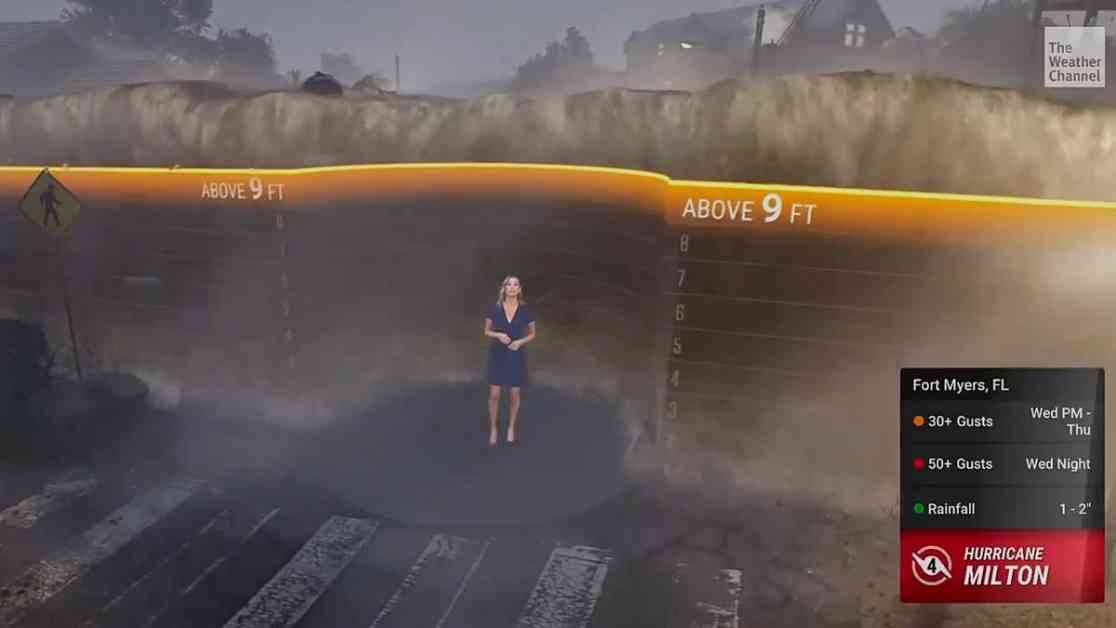Five years ago, The Weather Channel introduced a new tool to enhance weather presentations, powered by Unreal Engine, using mixed reality to provide a more detailed depiction of severe weather events. This technology has been regularly used on TWC for weather reports and storm warnings, with a particular focus on showcasing the intensity of severe weather such as wildfires. Today, this innovative technology is being utilized once again to demonstrate the potential storm surge from Hurricane Milton, one of the largest storms in history, expected to hit Florida on October 8.
Meteorologist Stephanie Abrams utilized the Weather Channel’s FloodFX simulation to illustrate the potential impact of the storm surge from Hurricane Milton in a video shared on X (formerly Twitter). The mixed reality setup created a chillingly realistic scenario, with Abrams standing in a virtual space that transformed into a street in Florida, surrounded by storm surge warnings and watches on a traditional weather screen behind her.
During the simulation, Abrams warned viewers about the possibility of a record-setting surge exceeding nine feet, emphasizing the life-threatening nature of the rising water levels. As the virtual water flooded the fictional Florida block behind her, Abrams highlighted the dangers of water levels reaching three feet above normally dry ground, making evacuation impossible and causing significant damage to homes and businesses.
The simulation continued to demonstrate the escalating risks as the water levels rose, with vehicles being carried away at six feet and structures failing at higher levels. Abrams emphasized the potential for surge values reaching 10 to 15 feet in some areas, urging viewers to be aware of evacuation zones, follow local officials’ instructions, and evacuate promptly if ordered to do so.
Unreal Engine, in collaboration with The Weather Channel, has developed a sophisticated pipeline for creating these mixed reality presentations, integrating live weather data to enhance the visual effects. Through the use of Unreal Engine’s Niagara VFX system, VFX artists can generate realistic effects such as rain, snow, fire, and water, while animations are controlled by the Sequencer multi-track nonlinear editor.
The significance of such simulations lies in their ability to accurately portray the devastating impact of hurricanes and storm surges, particularly in light of the spread of misinformation regarding the origins and effects of these natural disasters. By leveraging Unreal Engine technology, The Weather Channel can effectively educate the public on the potential dangers posed by powerful storms like Hurricane Milton.
In a time when conspiracy theories surrounding weather manipulation and political agendas are gaining traction, it is crucial for people to understand the real threats posed by natural disasters like hurricanes. The collaboration between Unreal Engine and The Weather Channel serves as a powerful tool for raising awareness and promoting preparedness in the face of extreme weather events.
Kotaku has reached out to Unreal Engine and The Weather Channel for further insights and comments on this groundbreaking technology.

